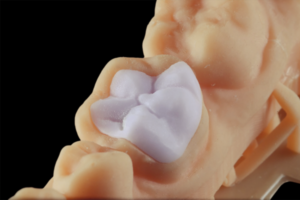AUTORES
Rafael Saviolo Moreira
Cirurgião-dentista – Universidade do Vale do Itajaí; Mestre e doutor em Anatomia Humana – Universidade Federal de São Paulo; Professor do curso de Medicina – Centro Universitário de Brusque/Unifebe.
Orcid: 0000-0002-3979-2354.
Julia Boni
Cirurgiã-dentista – Universidade do Vale do Itajaí.
Orcid: 0000-0002-4126-0672.
Luiza Lenzi Dellagiustina
Cirurgiã-dentista – Universidade do Vale do Itajaí.
Orcid: 0000-0002-7644-9467.
Cassiano Neves Almeida
Mestre em Endodontia – Centro de Pesquisas Odontológicas São Leopoldo Mandic; Especialista em Endodontia – Universidade do Planalto Catarinense; Professor do curso de Odontologia – Universidade do Vale do Itajaí.
Orcid: 0000-0002-7854-2630.
Alberto Fedeli Jr.
Mestre em Cirurgia e Traumatologia Bucomaxilofacial – Pontifícia Universidade Católica do Rio Grande do Sul; Especialista em Implantodontia – Centro Universitário Leonardo da Vinci; Professor do curso de Medicina – Centro Universitário de Brusque/Unifebe.
Orcid: 0000-0003-1878-6083.
RESUMO
Objetivo: avaliar a presença de deformação das agulhas após uso em anestesias odontológicas e suas possíveis implicações. Material e métodos: foram avaliadas 72 agulhas de uso odontológico (60 curtas calibre 30 e 12 longas calibre 27), utilizadas em anestesias durante procedimentos clínicos realizados na clínica de Odontologia da Universidade do Vale do Itajaí pelos alunos do oitavo e nono semestre integral da disciplina de Cirurgia. As alterações nas agulhas foram analisadas sob microscopia óptica (4x e 10x de aumento). Resultados: 20 agulhas não mostraram deformação (27,72%), 33 mostraram uma deformação aceitável (45,8%) e 19 mostraram uma deformação danosa (26,3%). A proporção entre agulha curta/longa em cada classificação foi: sem deformação (17/3), com deformação aceitável (28/5) e com deformação danosa (15/4). O teste Qui-quadrado não identificou diferenças estatisticamente significativas. Conclusão: a maior parte das amostras analisadas apresentou deformação, o que pode levar a um dano nervoso quando o bisel encontra-se farpado para fora, ressaltando-se que a melhor alternativa para evitar acidentes são as medidas profiláticas.
Palavras-chave – Anestesia local; Ferimentos penetrantes produzidos por agulha; Nervo alveolar inferior.
ABSTRACT
Objective: to evaluate the presence of deformation of needles after use in dental anesthesia and its possible implications. Material and methods: 72 dental needles were evaluated (60 short 30 gauge, 12 long 27 gauge) used in anesthesia during clinical procedures, performed at the Dentistry Clinic of the University of Vale do Itajaí, by students from 8 and 9 semester and for the discipline of Surgery. Changes in the needles were analyzed under optical microscopy (4x and 10x magnification). Results: 20 needles showed no deformation (27.72%), 33 an acceptable deformation (45.8%), and 19 a harmful deformation (26.3%). The short/long needle ratio in each classification was: no deformation (17/3), acceptable deformation (28/5) and harmful deformation (15/4). The Chi-square test did not identify statistically significant differences. Conclusion: most of the samples analyzed showed deformation, which can lead to nerve damage when the bevel is barbed outwards, emphasizing that the best alternative to avoid accidents are prophylactic measures.
Key words – Anesthesia local; Needlestick injuries; Mandibular nerve.
Recebido em set/2021
Aprovado em dez/2021
Referências
- Stacy GC, Hajjar G. Barbed needle and inexplicable paresthesias and trismus after dental regional anesthesia. Oral Surg Oral Med Oral Pathol 1994;77(6):585-8.
- Fonseca CG, Castillo DR, Cristerna BIC, Masuoka D, Guillen AJP. Bevel tip deformation in new and used dental needles. Microsc Res Tech 2015;3(1):1-5.
- Yadav P, Kumar VR. Evaluation of local anaesthetic failures in dental practice. J Int Oral Health 2010;2(4):17-21.
- Sambrook PJ, Goss AN. Severe adverse reactions to dental local anaesthetics: prolonged mandibular and lingual nerve anaesthesia. Aust Dent J 2011;56(2):154-9.
- Smith MH, Lung KE. Nerve injuries after dental injection: a review of the literature. J Can Dent Assoc 2006;72(6):559-64.
- Dau M, Buttchereit I, Ganz C, Frerich B, Anisimova EN, Daubländer M et al. Influence of needle bevel design on injection pain and needle deformation in dental local infiltration anaesthesia – randomized clinical trial. Int J Oral Maxillofac Surg 2017;46(11):1484-9.
- Marqués NA, Molina ED, Borrás MT, Aytés LB, Escoda CG. Comparison of two needle models in terms of bevel deformation during truncal block of the inferior alveolar nerve. Med Oral Patol Oral Cir Bucal 2007;12(4):317-22.
- Crean SJ, Powis A. Neurological complications of local anaesthetics in dentistry. Dent Update 1999;26(8):344-9.
- Harn SD, Durham TM. Incidence of lingual nerve trauma and postinjection complications in conventional mandibular block anesthesia. J Am Dent Assoc 1990;121(4):519-23.
- Säkkinen J, Huppunen M, Suuronen R. Complication following local anaesthesia. Nor Tannlaegeforen Tid 2005;115(1):48-52.
- Garisto GA, Gaffen AS, Lawrence HP, Tenenbaum HC, Haas DA. Occurrence of paresthesia after dental local anesthetic administration in the United States. J Am Dent Assoc 2010;141(7):836-44.
- Gaffen AS, Haas DA. Retrospective review of voluntary reports of nonsurgical paresthesia in dentistry. J Can Dent Assoc 2009;75(8):579.
- Pogrel MA, Thamby S. Permanent nerve involvement resulting from inferior alveolar nerve blocks. J Am Dent Assoc 2000;131(7):901-7.
- Campelo AR, Silva GM, Hermas POS, Elias R. Acidentes em anestesia local. Acervo Cispre, 2006.





